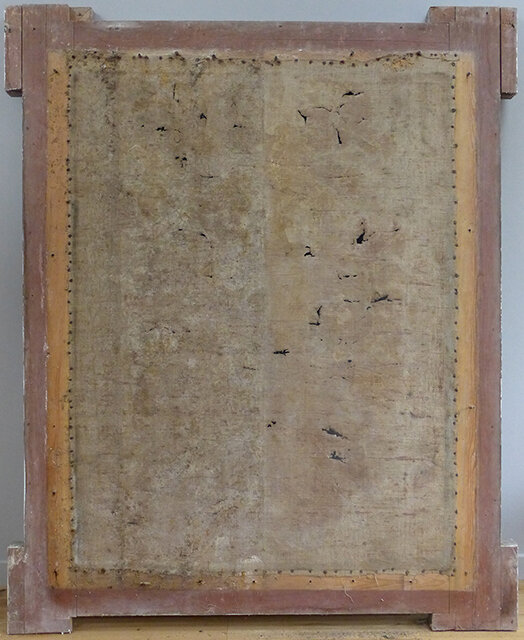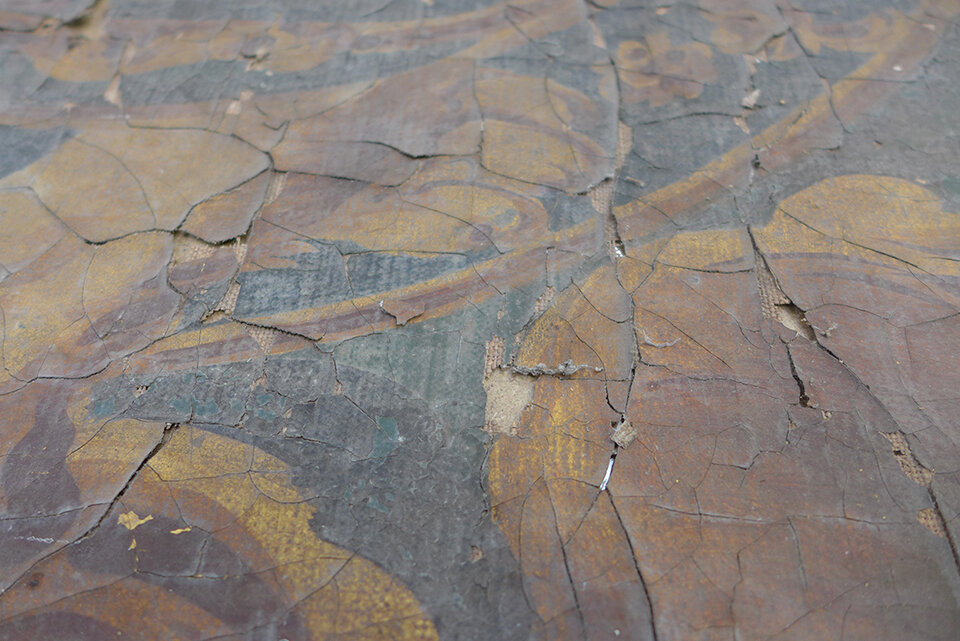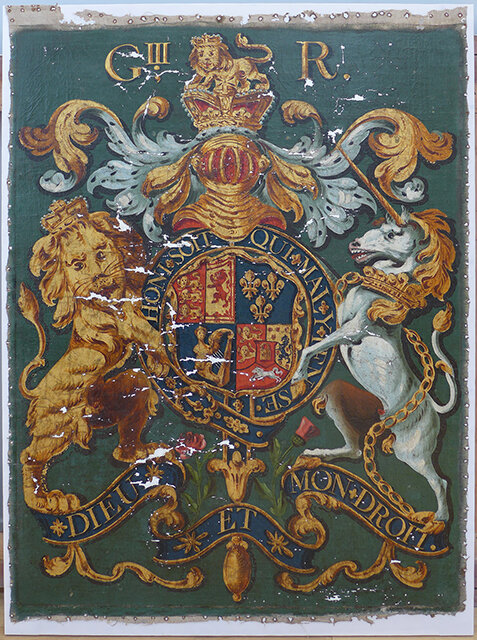Royal Coat of Arms to George III
Church of St Mary the Virgin, Anmer, Norfolk
The Royal Arms bears the monogram of George III and dates from 1760-1801. The Arms have been painted on to single piece of linen canvas measuring 166 x 123 cm at its maximum dimensions. The canvas was attached directly onto the reverse of the frame, which is common for works in churches from this date. On the reverse of the painting six large, vertical boards were nailed into the back of the frame as part of the original construction, placed in direct contact with the reverse of the canvas. The wooden backing was in direct contact with the church wall and had deteriorated becoming spongy due to moisture, mould and woodworm, which in turn affected the canvas causing it to rot from the reverse.
The varnish layers on both the painting and the frame had degraded, becoming opaque and no longer saturating the paint layers below. On top of the varnish were thick dirt layers obscuring the brilliant heraldic colours used in the painting. The treatment sought to address structural issues with the canvas and ensure its long term stability.
Royal Coat of Arms before treatment, framed.
Reverse of the painting showing wooden boards which had become damp and rotten with mould growth.
Reverse of painting after boards removed. The canvas has been tacked directly onto the back of the frame, a traditional method often seen in church paintings such as Royal Arms and hatchments. The dirt has been carefully removed from the right hand side.
Detail showing where the canvas has rotted from the reverse leaving the paint layer completely unsupported in localised areas.
Detail of surface with raised cracks and losses to the paint layer.
Detail of raised paint.
Raking light image of raised paint, the canvas is no longer strong enough to adequately support the paint layers which are pulling the canvas forward following the lines of age cracks.
Detail during cleaning, the varnish had become so degraded it was no longer soluble in solvents but responded well to aqueous solutions. In areas the varnish had become completely opaque, partly due to degradation but also due to dirt.
Cleaning test showing the impact the degraded, dirty varnish had on the colour and tone of the original paint layers below.
Detail of gilded areas during varnish removal.
Detail of canvas inserts used to fill holes in the original canvas.
The original linen canvas was reinforced by hand lining. The canvas is attached to a secondary fabric support, in this instance a synthetic fabric which is less responsive to environmental fluctuations.
Losses to the paint layer were filled with a chalk putty. Despite the degradation of the canvas and paint layers the losses were fairly localised. Retouching was only undertaken on areas of complete loss.
Royal Coat of Arms after treatment.
Reverse of the painting after treatment. To ensure the future stability of the painting it was attached to a stretcher following lining and conservation treatment.















